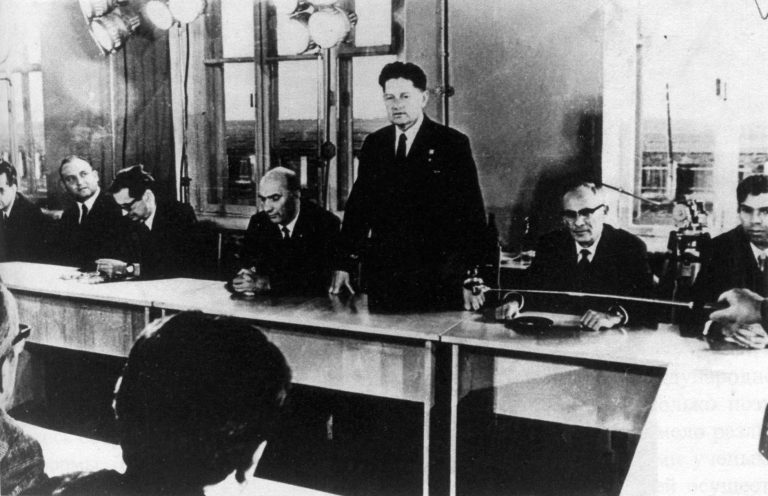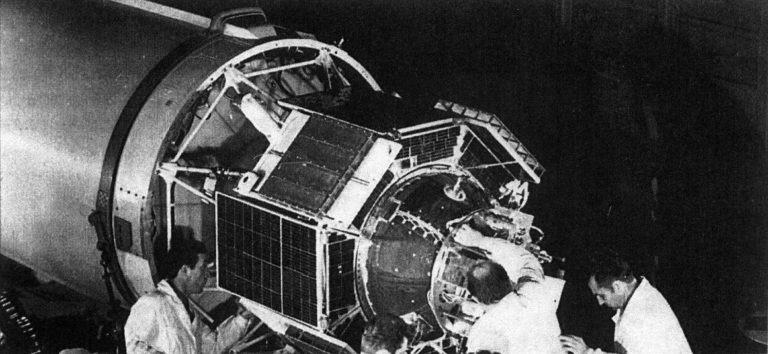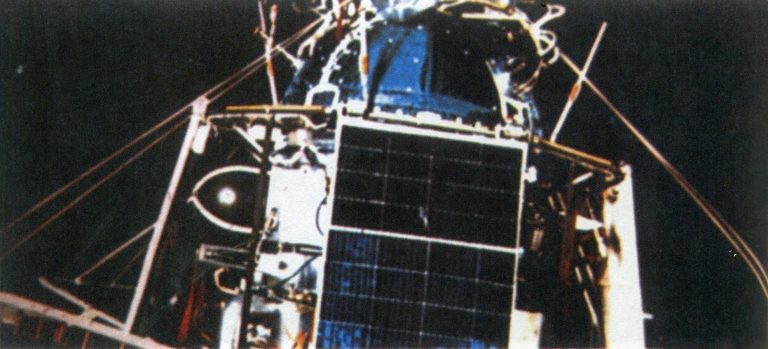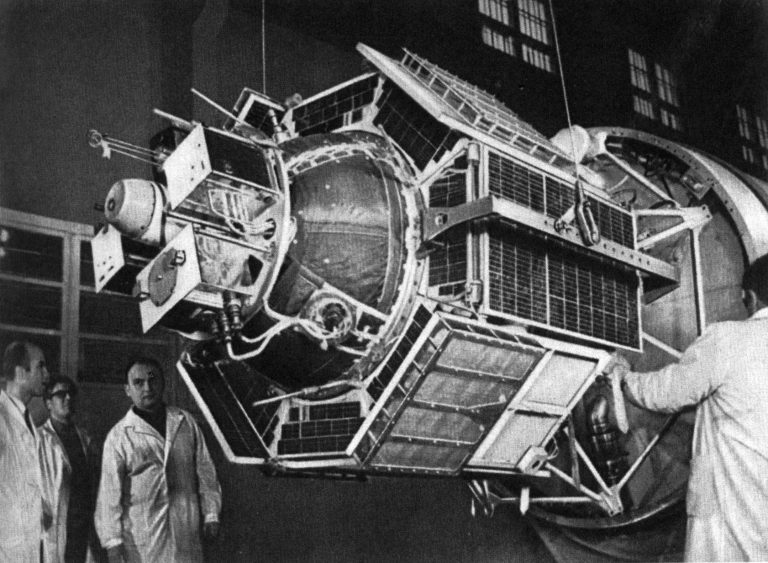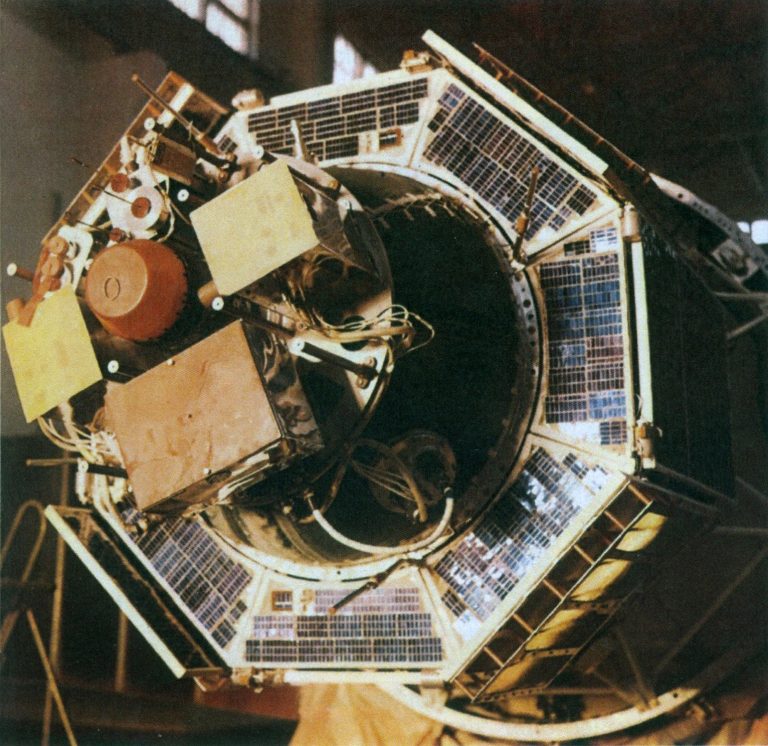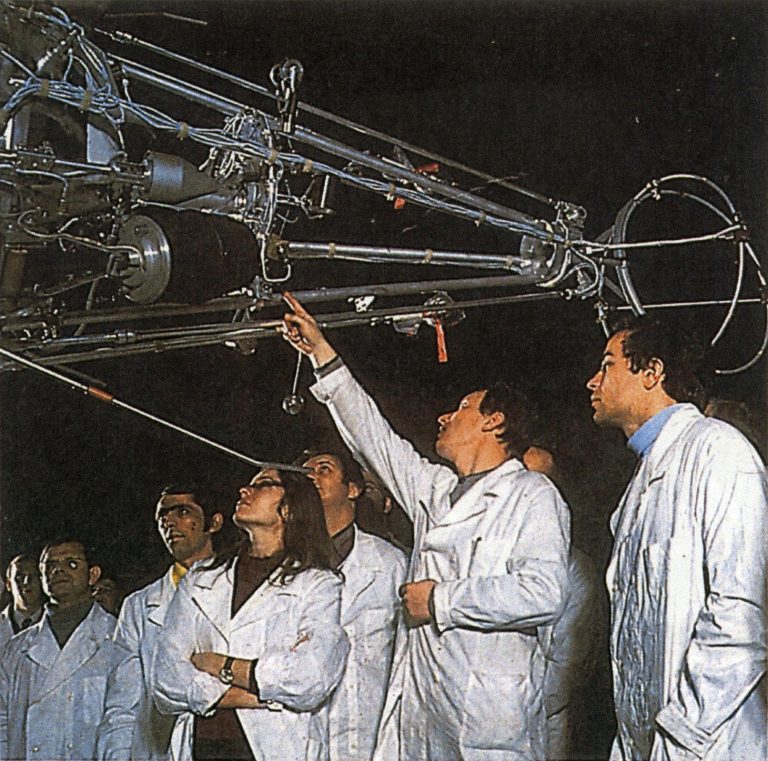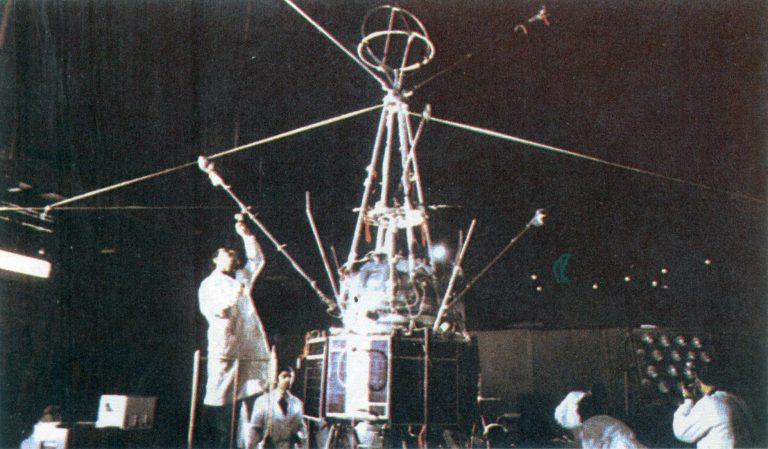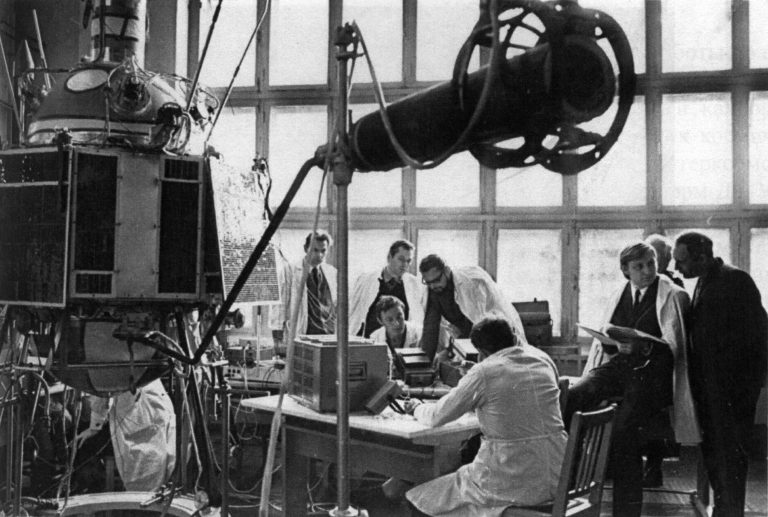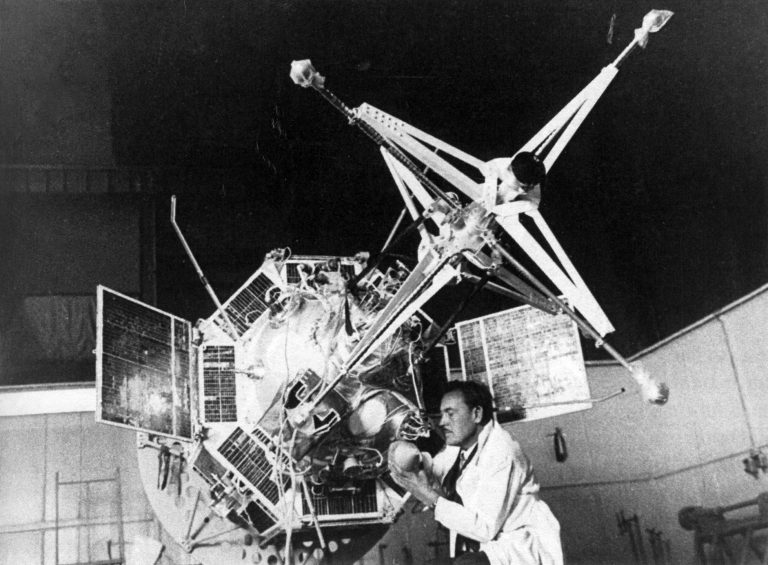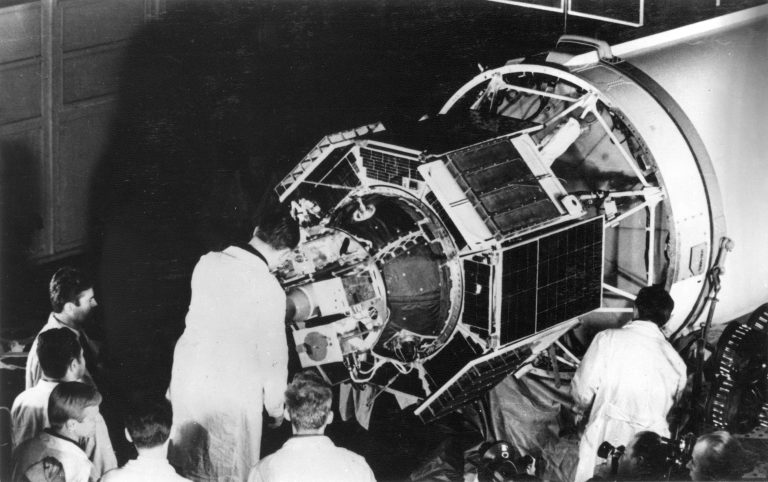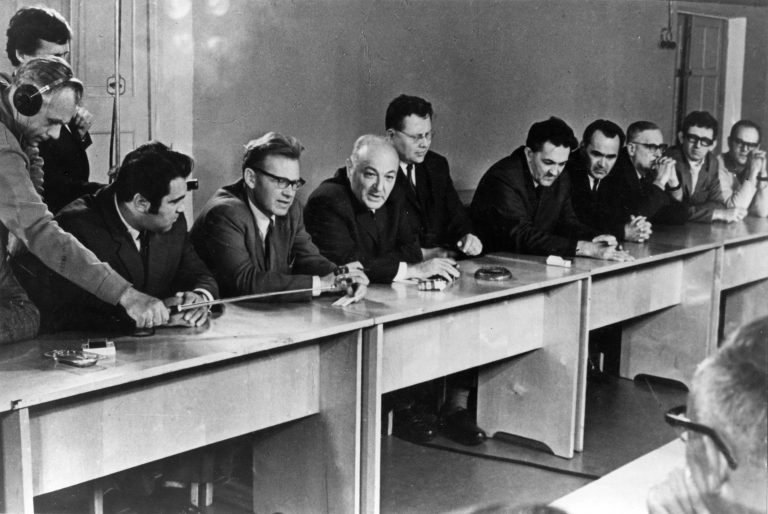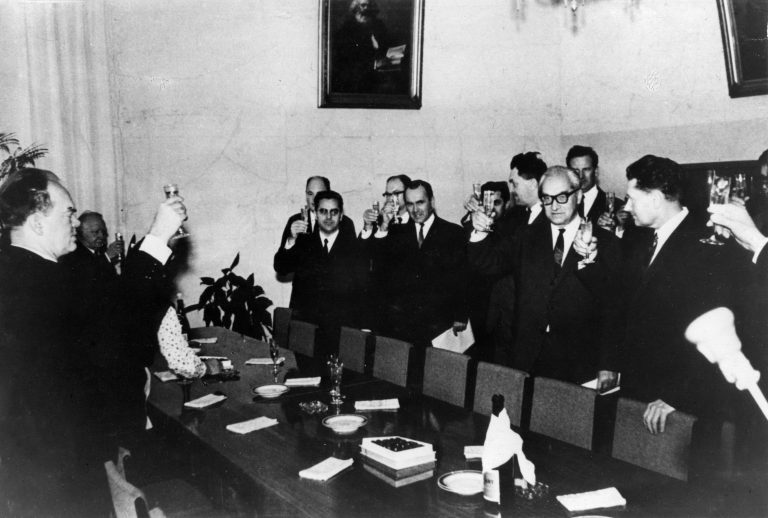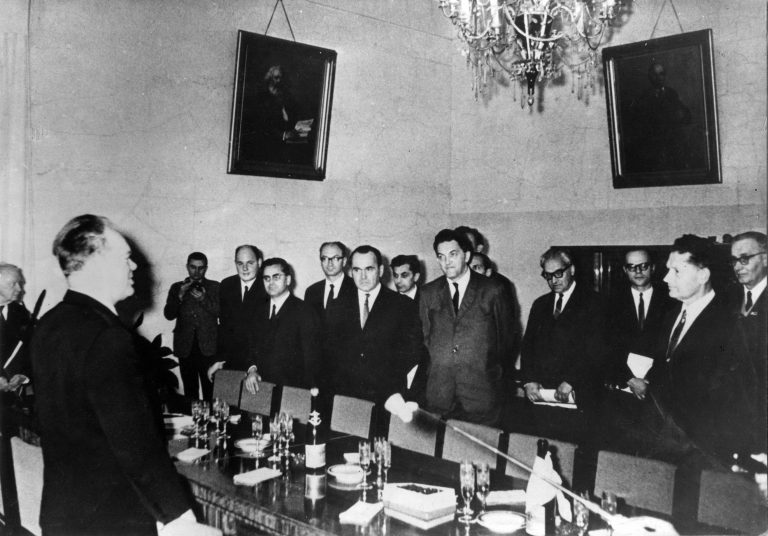Press-center
Press-center
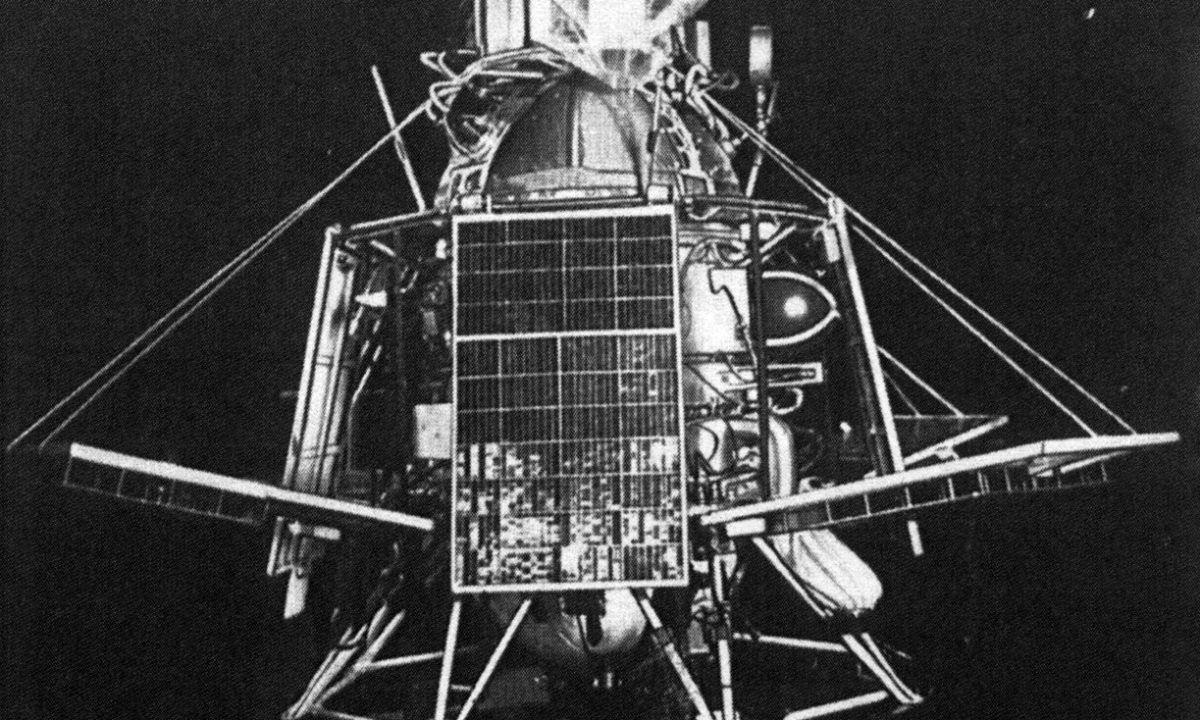
THE 50TH ANNIVERSARY OF INTERKOSMOS PROGRAM
On 14 October 1969, Kosmos inserted into orbit DS-U3-IK-1 (Interkosmos-1) satellite that was created due to cooperation of scientists from the U.S.S.R., Czechoslovakia and GDR (German Democratic Republic). This was the beginning of long-term international collaboration in the field of studying upper atmosphere physics, the space near the Earth, and exploring the Earth from space.
Scientists and experts’ international contacts in the field of researching and using space dates back to 1957. Right after the launch of the first of artificial Earth satellites, the joint optical observations also began. Visual, photographic and photometric observations made it possible to study the Earth upper atmosphere density, the terrestrial gravitational field characteristics, explore geomagnetic activity, and set up the prediction service of satellite motion in Earth orbit.
On 16 March 1962, Telegraph Agency of the U.S.S.R. (TASS) announced to the whole world that the U.S.S.R had launched the first satellite of a new satellite series called Kosmos. The satellite was inserted into orbit by the launch vehicle (LV), named as the satellite, that defined by a simple and low-cost construction, and was capable of carrying satellites weighing 450 kg to an altitude of 200 km. It was Kosmos 11K63 – the second Soviet LV and the first developed by Yuzhnoye SDO that was then called OKB-568 (Experimental Design Bureau). This LV was developed by installing an additional stage on the one stage 8K63.
The LV preliminary design was developed in 1959 along with the program for carrying out space research and defense application using this LV. In 1960, OKB-568 was granted by the permission to develop 10 launch vehicles for launching the artificial Earth satellites equipped with different equipment for accomplishing different tasks. The launch was to be performed from the temporary silo in Kapustin Yar, the state central launch site.
The 11K63 is the sole domestically built LV, being launched from silo, its stages were installed directly on the launch pad using vertical method. The first launch conducted on 27 October 1961 was a failure, while the first successful launch – on 16 March 1962. After completing development batches launches, which showed the efficiency of the satellites inserted into orbit, in November 1962, it was decided to start the batch series line production of the second Soviet LV, and build the launch site with service tower for it. The LV was assigned index 11K63, while for everyone it was known Kosmos.
Kosmos became the first Soviet LV produced in large batches and put into the service as a complex consisting of a launch vehicle, a launcher and a satellite. Complex K11K63 that was put into service consisted of the K11K63 and the calibrating artificial Earth satellite developed by Yuzhnoye SDO for Missile Defense. In all, 165 launches were conducted, of these, 143 were successful. Kosmos launched artificial Earth satellites of Kosmos satellite series since 16.03.62 and Interkosmos series since 14.10.69. This launch vehicle was in service until 18 June 1977 the data of its last launch.
The satellites of Interkosmos series differed from others by their form and scientific equipment although they were developed based on the unitized design. According to scientific problems, the satellites can be divided into three groups for:
– exploring the Sun;
– conducting ionospheric research; and
– studying the Earth’s magnetosphere.
The first satellite developed for Interkosmos program was DS-U3-IK-1. It was inserted into orbit from Kapustin Yar on 14 October 1969 and called Interkosmos-1. The first mutual test for Interkosmos program was comprehensive: the observation was conducted from the satellite inserted into orbit and the ground observatories of the countries participating under the program. It made the first polarization measurements of X-rays during solar flares. It was found that at an altitude of around 100-120 km there was oxygen 2-3 times less than suggested earlier.
The efficiency of unitized satellites developed based on DS-U1, DS-U2, DS-U3 became a crucial factor due to which these satellites were selected as baselined for developing international collaboration in the field of space research. Based on these satellites, 16 satellites was developed and inserted into orbit under the international program.
Since October 1969 up to November 1979, 20 satellites of Interkosmos series and 8 high-altitude research vehicles of Vertical type were launched. A number of launch vehicles (such as satellites Kosmos, Meteor) launched according to the national program had onboard equipment developed by the scientists and experts of socialist countries under Interkosmos program.
In 1976, the first Automatic Universal Orbital Station (AUOS) was launched under Interkosmos program. The AUOS was able to carry 2-3 times much more of scientific equipment in comparison with satellites of Interkosmos series, and its orbital lifetime was increased. On the board of the first AUOS Interkosmos-15, the integral telemetry system intended for receiving scientific information from satellites of Interkosmos series over the countries participating under the program was successfully tested.
In all, since October 1969 up to December 1991 25 artificial Earth satellites were launched, of these, 22 satellites were developed by Yuzhnoye SDO and manufactured by Yuzhmash. The last launch of automatic satellite Interkosmos-25 (AUOS-3-AP-IK) was conducted on 18 December 1991 from Plesetsk.
Since Interkosmos program was established, it developed gradually. Every year was marked with the developing of sophisticated equipment, the conducting of multifactor experiments, and the calculating international collaboration experience. The traditional scientific schools of countries participating under the program opened a new way of development due to the experiments they conducted with the help of our launch vehicles and satellites. The interesting scientific research results were achieved; some of them became a major contribution to space science and applied research for nation’s economy.
The State Commission meeting on the satellite Interkosmos-1 launch (at Kapustin Yar Cosmodrome)
Satellite Interkosmos-1
Satellite Interkosmos-1
Satellite Interkosmos-4
Satellite Interkosmos-4
Satellite Interkosmos-14
Satellite Interkosmos-14
The preparation of the next satellite of the Interkosmos series.
The preparation of the next satellite of the Interkosmos series.
Satellite Interkosmos-1
The representatives of the countries participating in the Interkosmos program.
The reception on the occasion of the satellite Interkosmos-1 launch at the Presidium of the Academy of Sciences.
The reception on the occasion of the satellite Interkosmos-1 launch at the Presidium of the Academy of Sciences.
Related posts
ACTIVITIES ARE UNDER WAY TO DEVELOP THE UKRAINIAN ARTILLERY MISSILES TAIFUN-1 FOR GRAD MULTIPLE ROCKET LAUNCHER SYSTEM
ANTARES LAUNCHES CYGNUS WITH CARGO FOR INTERNATIONAL SPACE STATION
OFFICIAL COMMENTS ON THE STATUS OF SICH -2-1 (SICH -2-30)
CONDOLENCES TO THE FAMILIES, FRIENDS AND FELLOW-SOLDIERS OF THE TRAGICALLY KILLED ON THE TERRITORY OF SE YUZHMASH AND SE YUZHNOYE SDO
https://lingkungan.ft.unand.ac.id/id/program-gsgs/
https://www.golfchannel.co.th/tv-schedule/
http://www.eiar.gov.et/contact/
https://www.iimmkolkata.com/dmlm/
https://autocaravanasgayo.com/servicios/
https://laboutique.jormax.com/loja/millenium/
https://behzadiplastics.com/contactus/
https://joadahconsult.com/team_design/
https://www.visitasguiadastui.com/tour-item/tui-historico/
https://institutoebenezer.net/evento/united-states-independence-day
https://navesa.com.br/contato/
https://www.fc-ekeren.be/kalender/
https://colsadav.org/profesores/
https://www.rmragman.authorsbreeze.com/contact-us/
https://www.internacionaldvdspain.com/articles/decoracion/
https://exin.se/flytt-och-transport/
https://www.qlmagic.com/turn_structure/
https://www.saborlatino.jp/categoria-produto/22000/
https://publicistpaper.com/contact/
https://seocompany.us.com/portfolio/
https://atharveducation.com/bds.php/
https://www.casacarbone.com/fdm-menu-section/entrees/
https://www.iti.edu.pa/engine/
https://www.shortcuts.es/soluciones/software-peluqueria/
https://odin.rvbar.ru/poster/vorovayki/
https://newnoardicwave.com/privacy-policy/
https://www.envision-plus.co.th/
https://cbdconsulting.com/technology/tinkercad/
https://learningsessions.in/caiib-exam-date/
https://www.shortcuts.es/demos/
https://atlpanama.com/contactenos/
https://einkaufsgemeinschaft.agritec.at/aktionen/
https://thecolorrun.pt/pt/about/
https://odin.rvbar.ru/restoran/
https://alejandrodavidovich.com/
https://mycreativitymypower.eu/
https://fineline.uk.com/modelmaking/
https://yvonnedme.com/premier-bet-zone-mobile/
https://navesa.com.br/politica-de-privacidade/
https://lyon.snuep.fr/category/mutations/intra/
https://cucgachcafe.com.vn/luong-minh-phuong-la-ai/
https://www.booksarepopculture.com/
https://tunaskaryajakarta.sch.id/
https://www.visitasguiadastui.com/contacto/
https://www.vizgraphics.com/showcase/
https://jdi.ac.ug/application/
https://www.kiadesivo.com.br/contato/
https://www.kiadesivo.com.br/obrigada-pela-compra/
https://www.kiadesivo.com.br/politica-de-privacidade/
